You might not think that there is much to the idea of crossing streets, bridges, etc., but there is a famous problem in mathematics
that deals with this idea of crossing.
The city of Konigsberg in Germany (but now called Kaliningrad in Russia) has a river that flows through the city. In the river, there are two
islands joined to the river banks and to each other by seven bridges. In the diagram below, the River pregel is in dark blue, the river banks
are labeled B and C, and the islands are labeled A and D.
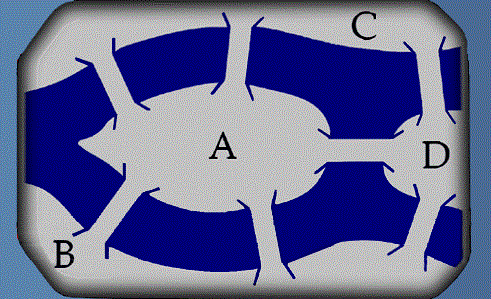
The citizens of Konigsberg, when they went out for a stroll on a Sunday afternoon, used to amuse themselves with a little game. They tried to plan their walk so that they would cross each of the 7 bridges once and only once.
They soon found it is impossible to make this trip.
It seemed they had to skip at least one bridge 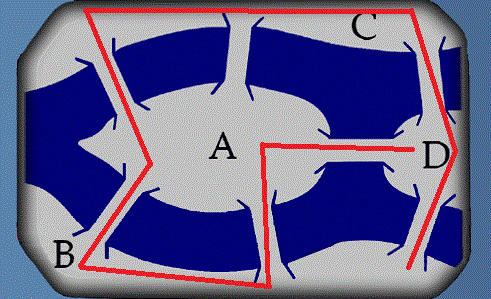
or they had to cross the same bridge twice. 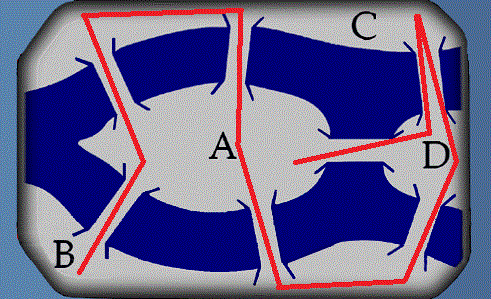
The people were convinced that they could not cross each bridge exactly once, but nobody was sure.
Finally, in 1735, somebody sent the problem to the Swiss mathemtician, Leonard Euler. Euler analyzed the problem as follows:
(1) Start at the South bank.
(2) Consider the island on the east.
There are 3 bridges leading to it.
If you start off the island, then you must end up on the island.
Think of a light switch (off - on - off - on).
(3) Consider the island on the west.
There are 5 bridges leading to it.
If you start off the island, then you must end up on the island.
(4) But it is impossible to be in two places at once.
Euler restated the problem in simpler form:
He represented each bank or island with a DOT.
He used a LINE to represent a bridge. So the problem looked like this:
 ==>
==> 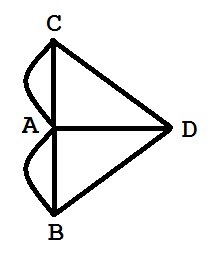
So, the problem was to draw the whole figure without lifting a pencil and without retracing a line. By examining a lot of figures of this
type, Euler found out which figures could be drawn in this way.
First he noticed dots where an even number of lines come together (Even vertices).
He also noticed dots where an odd number of lines met (Odd vertices).
The number of odd vertices in a figure is always even.
Euler showed that you can draw a figure without lifting your pencil only if the number of odd vertices is 2 or 0.
If a figure has more than 2 odd vertices, then it is impossible to draw.
Therefore, this is the reason why the citizens of Konigsberg were unable to cross all 7 bridges -- the figure has 4 odd vertices.
If a figure has no odd vertices, then you can begin at any point and you will end up where you started.
If a figure has 2 odd vertices, you must begin at one odd vertex and you will end up at the other odd vertex.
From Euler's analysis of the konigsberg walk developed a whole branch of mathematics, dealing with problems of theis kind. This is the foundation of network theory and circuits. The branch of mathematics is called TOPOLOGY.
Fill in the chart for the following:
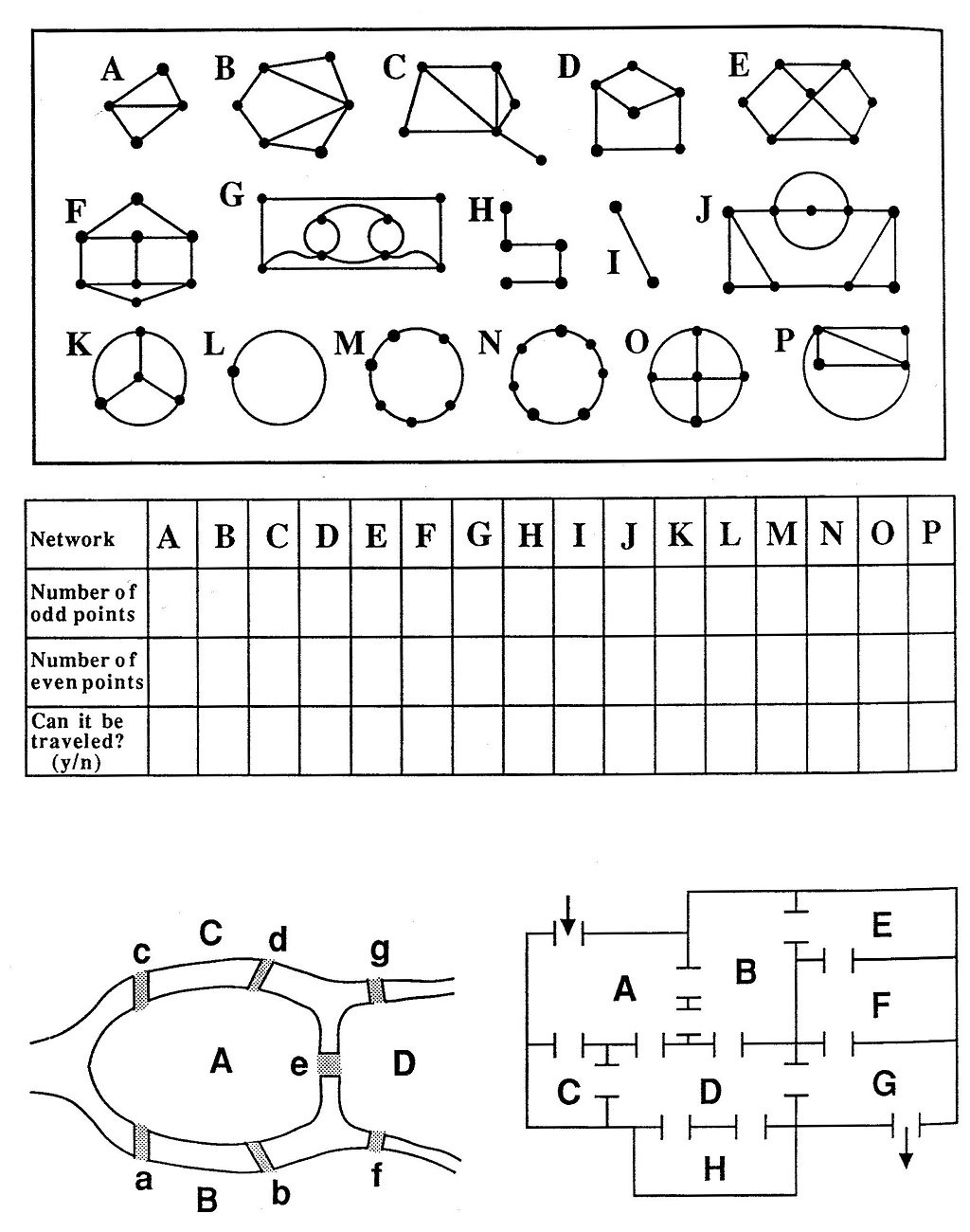



 ==>
==> 
